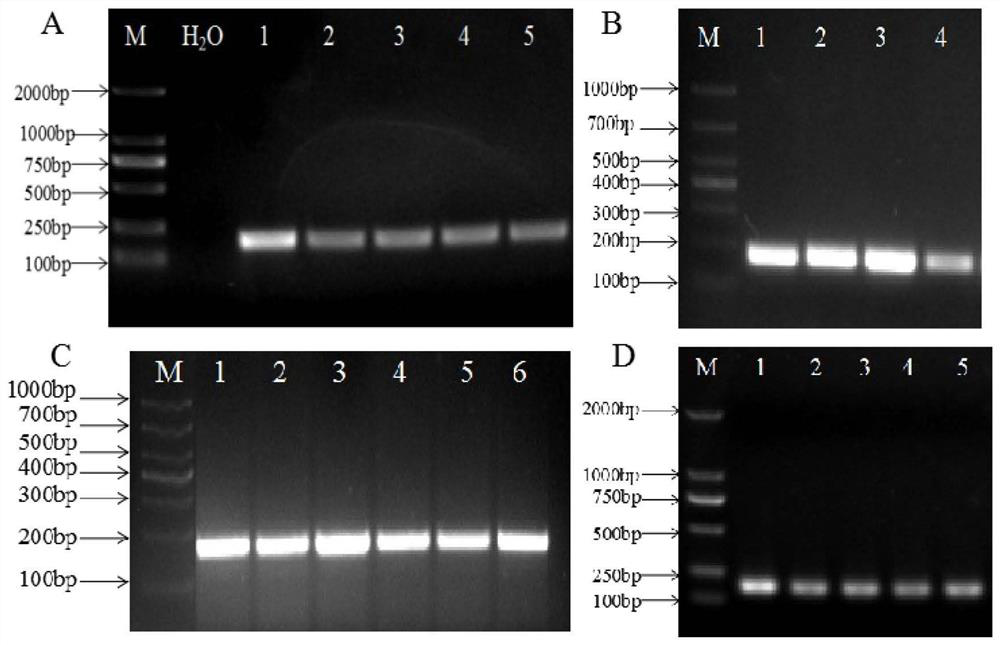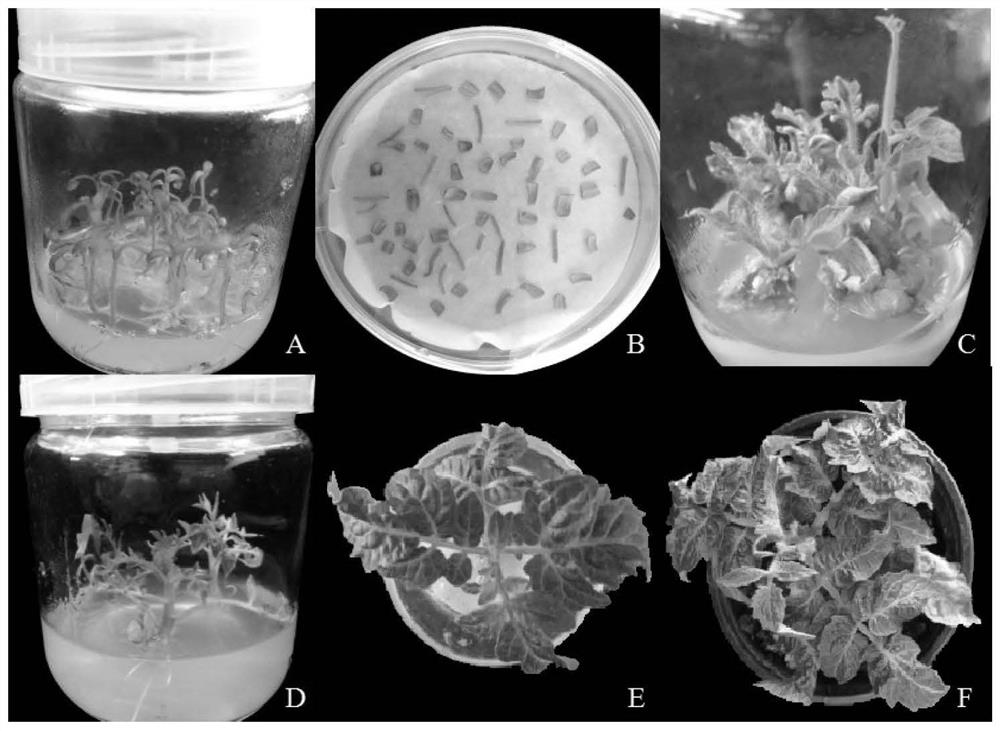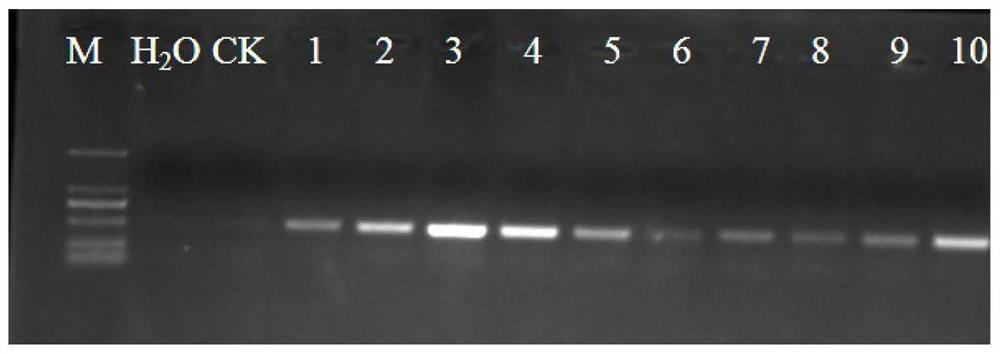Gene regulating sugar content in tomato fruit and its application
A tomato, gene technology, applied in the field of biotechnology and genetic breeding
- Summary
- Abstract
- Description
- Claims
- Application Information
AI Technical Summary
Problems solved by technology
Method used
Image
Examples
Embodiment 1
[0028] Construction of RNAi Vector and Recombinant Agrobacterium
[0029] The SlCIN2-RNAi vector was constructed by gateway technology.
[0030] 1. Extract tomato RNA, reverse transcribed into cDNA, and amplify the target fragment SlCIN2 gene with cDNA as a template, and the target fragment size is 170bp ( figure 1 A), its nucleotide sequence is as shown in SEQ ID NO.1;
[0031] The primer sequences are as follows:
[0032] SlCIN2-F: 5'-CGCACCTGGTCCATTGTGTCGTCTT-3', shown in SEQ ID NO.2.
[0033] SlCIN2-R: 5'-GGTGTGTTCTTAGGGTCGCT-3', shown in SEQ ID NO.3.
[0034] The amplification reaction system is as follows:
[0035] High-fidelity DNA polymerase 10 μL, SlCIN2-F 1 μL, SlCIN2-R 1 μL, cDNA 2 μL, RNase-FreeddH2O 6 μL.
[0036] The amplification reaction procedure is as follows:
[0037] 98°C for 30s, 1 cycle; 98°C for 10s, 55°C for 20s, 72°C for 10s, 35 cycles; 72°C for 7min.
[0038] 2. Through the TOPO reaction, take 4 μL of the amplification product of the target fra...
Embodiment 2
[0040] Recombinant Agrobacterium transformation tomato
[0041] Using Micro-Tom tomato as the test material, the recombinant vector plasmid was transformed into tomato by leaf disk method to obtain stable genetic transformation material.
[0042] When the tomato seedlings in the medium grow until the cotyledons are fully stretched ( figure 2 A), cut cotyledons with a length of 0.5 cm and place them in the pre-culture medium for 2 days in the dark, using OD 600 Agrobacterium reaching 0.6-0.8 infects tomato cotyledons, and the infected leaves are placed in the co-culture medium with the back of the leaves facing up ( figure 2 B), after dark culture for 2 days, the explants were transferred to bacteriostatic medium for culture. When the explants were grown in it for two weeks, they were transferred to sprout medium ( figure 2 C), after which the medium was changed at two-week intervals. When the adventitious buds grow to 2-3cm, the adventitious buds are cut from the stem b...
Embodiment 3
[0044] Identification of SlCIN2-silenced transgenic tomato plants
[0045] The DNA of transgenic tomato leaves was extracted, and the screened silenced SlCIN2 transgenic plants were identified by PCR. SlCIN2 silenced plants were detected using the specific primers designed from the Bar gene locus on the pB7GWIWG2 vector plasmid.
[0046] The specific primer sequences are as follows:
[0047] Bar-F: 5'-GAAGTCCAGCTGCCAGAAA-3' as shown in SEQ ID NO.4.
[0048] Bar-R: 5'-CACCATCGTCAACCACTACA-3'T, as shown in SEQ ID NO.5.
[0049] PCR amplification was performed with DNA as a template and electrophoresis was performed to detect the specific fragment length of 439bp. The results showed that a specific fragment of 439 bp was detected in 10 transgenic lines ( image 3 ), while the negative controls (ddH2O and untransformed wild-type Micro-Tom) did not amplify any bands. These 10 lines are all transgenic positive plants, which can be used for subsequent experimental analysis.
PUM
 Login to View More
Login to View More Abstract
Description
Claims
Application Information
 Login to View More
Login to View More - R&D
- Intellectual Property
- Life Sciences
- Materials
- Tech Scout
- Unparalleled Data Quality
- Higher Quality Content
- 60% Fewer Hallucinations
Browse by: Latest US Patents, China's latest patents, Technical Efficacy Thesaurus, Application Domain, Technology Topic, Popular Technical Reports.
© 2025 PatSnap. All rights reserved.Legal|Privacy policy|Modern Slavery Act Transparency Statement|Sitemap|About US| Contact US: help@patsnap.com



